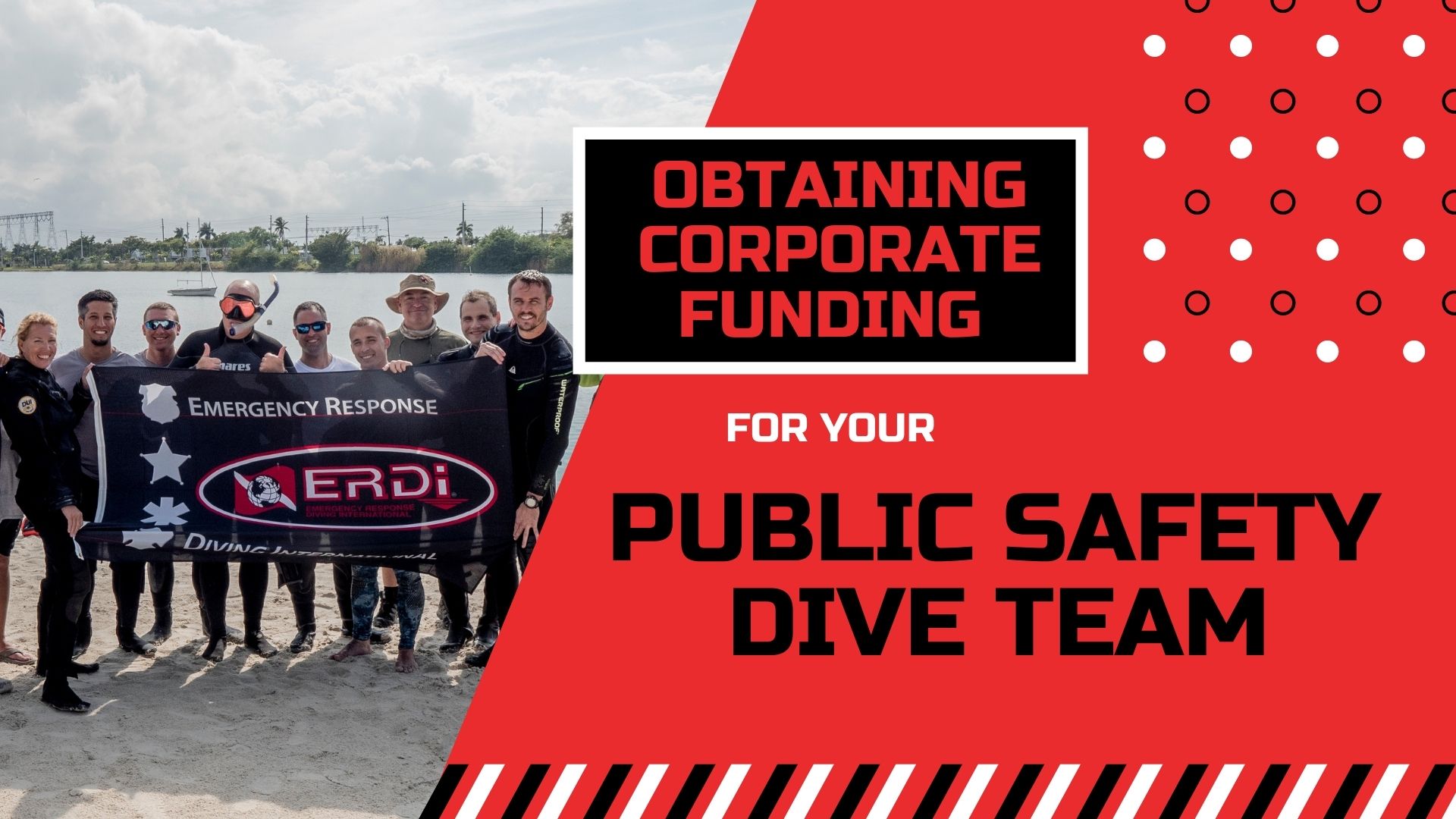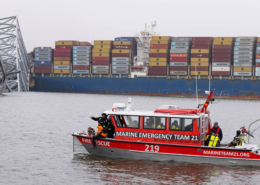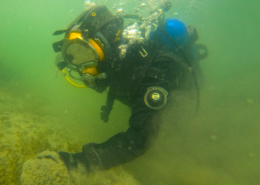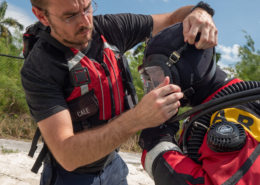Obtaining Corporate Funding for Your Public Safety Dive Team
by: Aaron Bradshaw
Funding a public safety dive team can be a challenge. Gear is expensive, budgets are limited, and funding isn’t usually falling into your lap. Many times, teams must search for grants, local business donations, multi municipality-based funding, and hold fundraisers. Fundraisers require significant time output from team members. One place that is often overlooked is corporate matching funds and volunteer hour grant matching. The restrictions and barriers to entry are also much lower than many grants. I’ll use my own experience with obtaining this funding as an example.
What is my story?
A little backstory on how I got myself into this. My full-time job is in the Corporate IT world, working for a Fortune 100 company. I normally sit at a desk doing “computer stuff” as my wife would describe it. I am also a member of a local volunteer public safety dive team that is attached to a 501(c)(3) EMS agency. After joining the team, I became more exposed to the funding challenges and started looking for additional sources of funding outside our county and state matching funds. Working for a large company, I knew there was a foundation with employee donation matching funds opportunities to non-profits who qualified and were approved. They also donate IT equipment and services to non-profits and I had previously been involved working with a major food bank on network upgrades through this process. These are definitely opportunities for resources and funding but are there other opportunities?
My employer also offers volunteer hour grant matching. When volunteering with eligible organizations, the company will match those hours with a cash grant to the agency. There was an extensive process for getting approved, and just like with a normal grant process, there were eligibility requirements. For example, in this case, to be eligible the organization must:
- be a 501(c)(3)
- meet overhead rates
- most importantly – have audited financial reports and public filings.
There was an essay that had to be included as well, that outlined the community impact, funding needs, area of service, and future-looking projects. There was also a minimum time or dollar threshold that had to be volunteered or donated (100 hours or $1000). This was easy to hit in a few full weekends of training. I was quite surprised that an option when submitting hours and documentation was a First Responder designation for Fire, Rescue, and EMS.
With this approval, not only do they match volunteer time and donations, but they also provide time off for volunteering and giving back to the community. I am able to get paid time off (outside my normal allowance) while giving back to the community, and the team is able to receive grant money for this time as well. This time off in the past has been used for calls and weekday training. The funds acquired by this method have resulted in an accelerated move to upgrade equipment for the team such as hazmat wings, harnesses, and replacement regulators with ongoing donations.
How can you as a team member and fundraiser take advantage of similar programs?
My corporation is not unique in offering this type of program. A common question I get asked is how do we discover these opportunities and put this into practice?
If you are on a volunteer team, ask new team members to provide their employer information upon application. In your new team member orientation and indoctrination, talk about fundraising and possible employer funding. Many companies offer these benefits, but most employees aren’t aware. One resource to track those down is here.
Many large corporations now have volunteer time requirements or goals for their employees. Is there a business in your team’s jurisdiction that you can offer opportunities to? This can be through finding volunteer divers, tenders, boat operators. Thinking outside the box, they may have resources to help you write grants, identify eligibility, or help with fundraising. Large corporations often have non-profit/community outreach coordinators that can be a resource within the company to help find volunteers, advertise opportunities, and navigate the process of becoming an approved agency. In my case, we have these individuals internally and a vendor that helped me navigate the process.
Workplace Philanthropy
As community involvement has become more of a focus point, I became aware of a new term: Workplace Philanthropy. In my case, volunteering and giving back to the community is now a requirement and is measured as part of my performance reviews. This can also help team members get positive visibility and recognition at their day job in the case of volunteer teams. Knowing they have the support of their employer will help keep them giving their time to the team. My volunteer team has multiple examples of members getting recognition and executive visibility at their workplace for their volunteer work.
Another opportunity is if an individual is making a cash, equipment, or other donation to the team, always outline matching possibilities when providing a receipt. It is easy to include this with the thank you letter and receipt for the donation as a reminder. This can easily double or triple some donations you may receive.
When navigating the hurdles to eligibility, you may need someone with grant writing experience, non-profit expertise, and record keeping acumen. You may unknowingly have some of that expertise already on your team. The community outreach coordinators from the corporation may be able to help you find the path through this as well. Be prepared to outline the impact your team has for the community, the area you service, and highlights of your team’s capabilities.
What are the options if I don’t have an eligible organization?
If you don’t have a 501(c)(3) or another eligible non-profit set up for your team, then look at the options of forming one with leadership. Paid and volunteer fire departments often have an auxiliary, relief fund, or other organization that fulfills this role. Work with leadership to determine what is possible within your team’s organization, regulations, and the support you would have. A non-profit may provide avenues for additional funding resources for the team. While there is a cost associated with setting this up, team leadership can weigh the benefits.
Next Steps?
Now is a great time, with many teams having restricted training schedules or training downtime, to take a look at options are available. For volunteer teams specifically, have all of your team members check with their employer about matching funds or volunteer hour matching opportunities. Take a look at your financial structure and any options you may have there to open up additional opportunities.


 Photo By: Defense Visual Information Distribution Service
Photo By: Defense Visual Information Distribution Service


 Y. ZIN
Y. ZIN


Tinggalkan balasan
Ingin bergabung dalam diskusi?Silahkan berkontribusi!